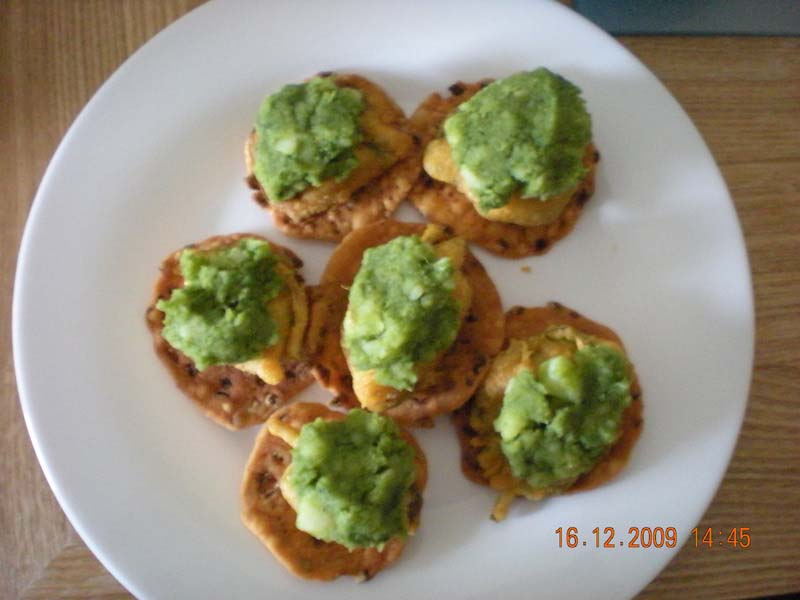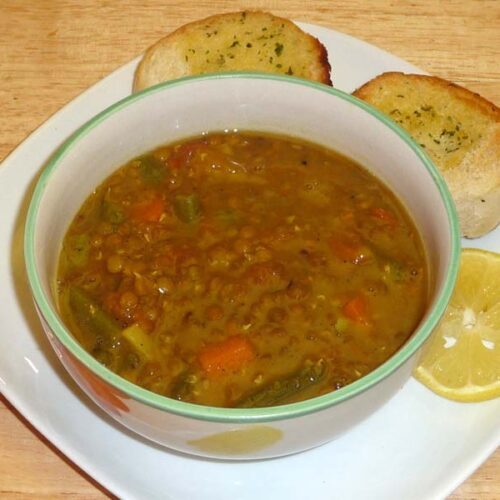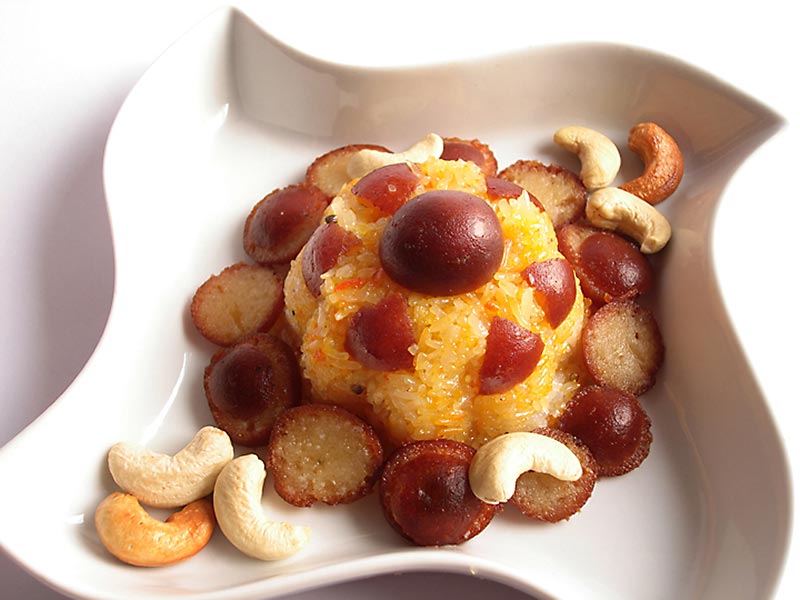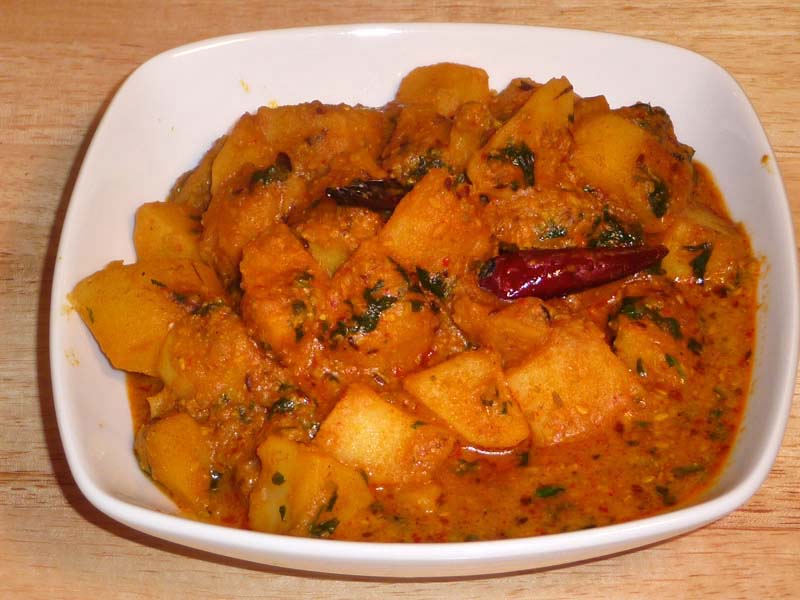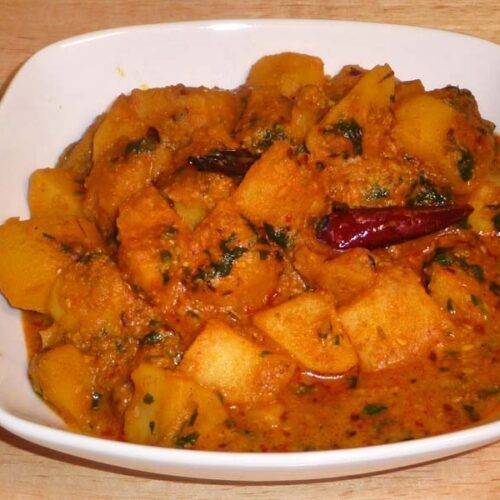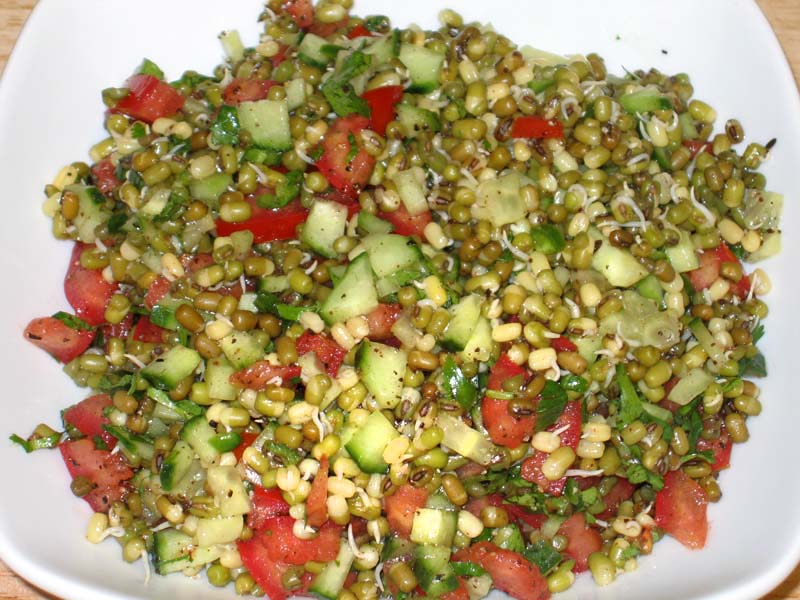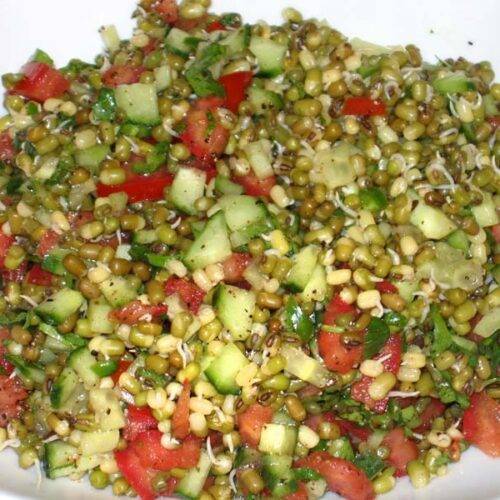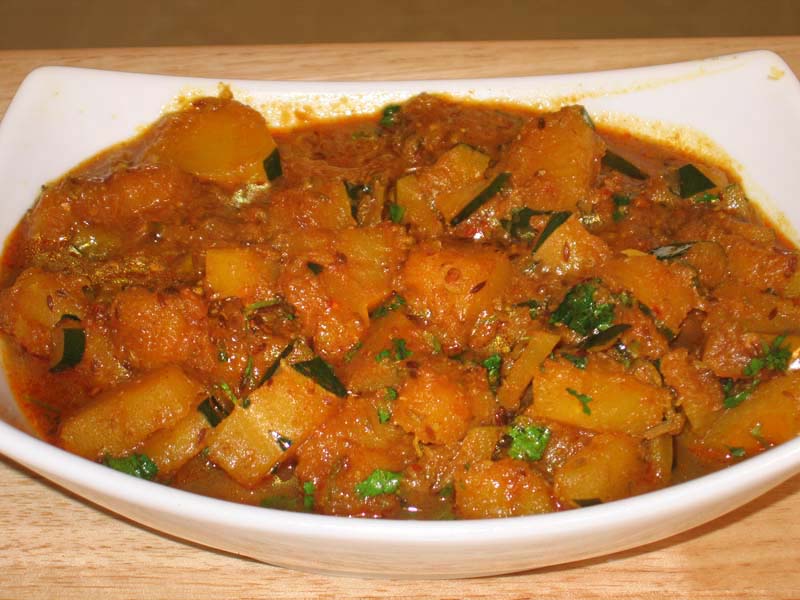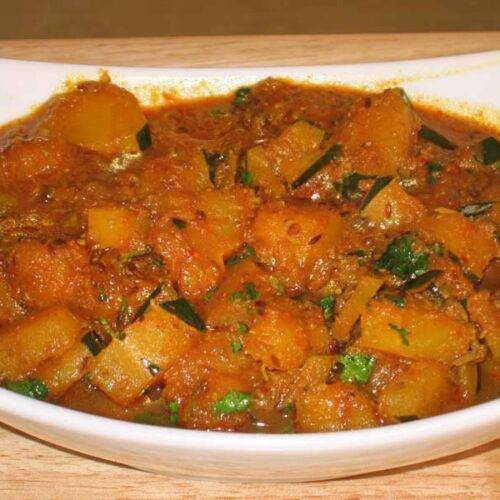FIRST PLACE:
- Seema Kukanur created Hara-Bhara Palak Papadi Chat. The full recipe is listed below.
SECOND PLACE:
- Richa Agarwal from Massachusetts created a variation called Bread Dahi Vada Papdi Chaat (also listed below).
Other top contributions are also worth mentioning here. Thank you for participating:
- Murali Anantha
- Meeta Asarpota
- Prajakta Deodhar
- Ravi Vinayak
- Hamsaveni H.T.
Hara-Bhara Palak Papadi Chat
Recipe serves 4
Colour full and delicious Papadi Chat with Palak Pakoras, spicy Potato mix, sprouted moong and pomegranate seeds.
Ingredients for Making Papdi:
- 1 cup all purpose flour (Maida or plain flour)
- 1/4 cup semolina flour (sooji)
- 2 tablespoons oil
- 1/2 teaspoon salt
- Finely chopped onions(optional)
- 1/4 teaspoon Red chilli powder
Ingredients for Making Palak Pakoras:
- 1 cup chick pea flour(Besan)
- 1/4 slat
- 1/4 red chilli powder
- Pinch of baking soda
- Pinch of Ajvain
- Palak(spinach) small leaves
- Oil for frying
- Water as required
For Garnishing the Papadi:
- 1 Boiled potato, mashed
- Palak Pakoras
- Hari cilantro chutney (recipe from manjulaskitchen.com)
- Tamarind chutney (recipe from manjulaskitchen.com)
- Sprouted Moong
- Smooth yogurt
- Pomegranate seeds
- Tomato slices
Method
Papdi:
Make Papadi either round or square in shape as showed in the video at manjulaskitchen.com and if you want add finely chopped onions (optional) to the dry ingredients before adding water.
Palak Pakoras:
- Add all the dry ingredients and mix well.
- Add water and get it to the dosa batter consistency.
- Heat oil in a frying pan and once its hot dip palak leaf in the batter and fry it in oil.
- Remove when it’s fried and keep the Pakoras on a paper towel to remove excess oil.
Arranging the Papadi and Garnishing:
- Mash the potato’s and mix with hari cilantro chutney.
- Arrange the papadi on the plate.
- Place one palak pakora on each papadi.
- Now place spicy potato mixture on top of each palak pakora.
- Put drop of yogurt and tamarind chutney as shown in the picture.
- Add pomegranate seeds on top.
- Add sprouted moong in between each papadi.
- Arrange tomato slices and drop of tamarind chutney on the edge of the plate to make it colour full.
Enjoy the Hara-bhara palak papadi chat. If you want garnish with shev.
Bread Dahi Vada Papdi Chaat
A twist in traditional papdi chaat with a quick and easy recipe.
Cooking time: 15 minutes
Prepration time: 10 minutes
Ingredients:
For papdi:
- 1 cup all purpose flour (maida or plain flour)
- 1/4 cup semolina flour (sooji)
- 2 tablespoons oil
- 1/2 teaspoon salt
- 1/3 cup + 2 tablespoon lukewarm water
For Bread Dahi Vada:
- 4 slices of white bread
- 1/4 cup of cold milk
- Some raisins and cashews
- One grated cucumber,Half green chilly (chopped)
- Some grated dry coconut
- A pinch if sugar
To garnish the papdi:
- Grated carrot,raddish
- Chopped onion
- 2-3 leaves of cilantro
- Some namkeen like bhujia
- Plain yogurt
- Salt
- Roasted cumin seed powder (bhuna jeera)
- Red chili powder
- Hari cilantro chutney
- Tamarind chutney
Method
Papdi:
Make the papdis according to Manjula aunty’s recipe and keep aside.
Bread dahi vada:
- cut the brown corner of the bread slices and keep aside.
- Mix grated cucumber(drain all the juice of cucumber after grating it by pressing it with your palms),coconut,green chillies,chopped cashew nuts , raisins and sugar together.
- Now take a bread slice into your palm ,sprinkle milk on it slowly to make it little soft so that we can shape it into vadas.(do not soak bread slices )
- Take the mixer of cucumber and coconut and place in middle of the soft bread slice and form it into a vada by giving little pressure between your palms.(or make it into round shape according to your papdi)
- Repeat the same process with rest of the bread slices and keep it in the refrigerator to set for at least 10 minutes covering with clear wrap.
Garnish
- Take out the bread vadas from refrigerator.
- Put the yogurt into a bowl and mix with a fork or whisk until very smooth. Use some milk as needed to make a consistency similar to pancake batter. Add salt to taste and a pinch of sugar.. Keep aside
- Dip the papdi in the yogurt and place them into serving plate.
- place one bread vada on each papdi.
- Pour remaining yogurt on the vadas .
- Sprinkle cumin powder and red chili power according to your taste.
- Add cilantro and tamarind chutney .
- finish it with some grated carrots,raddish,chopped onions,cilantro leaves and some bhujia namkeen on top.
Note: You can make this in advance and assemble it just before the serving. So enjoy a quick, easy, and mouth watering recipe.

